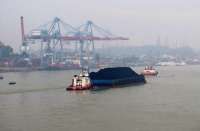But in the current context, there’s a twist: voter turnout among those out of work tends to rise when unemployment overall is high.
Amber Wichowsky, a political science professor at Marquette University in Wisconsin, studied thousands of state and local elections and found that higher unemployment is associated with higher turnout, and Republican incumbents “are more likely (than Democrats) to be punished by bad unemployment numbers.”
In the Nov. 3 election, she said, it could well be different: the public health crisis could suppress voting if people are worried about casting ballots in person.
Moreover, it’s hard to find a clear pattern linking unemployment rates to turnout in presidential elections, or to the outcome.
Read Also: U.S. employment growth slows in September; unemployment rate drops to 7.9%
Where was unemployment before past elections?
The jobless rate was nearly as high as it is now when voters picked Jimmy Carter, a Democrat, over Republican President Gerald Ford in 1976, when Carter lost to Republican challenger Ronald Reagan in 1980, and when Democratic Arkansas Governor Bill Clinton ousted Republican President George H.W. Bush in 1992.
It was also nearly as high when Americans reelected Democratic President Barack Obama in 2012.
High-frequency data tracked by Reuters shows shifts worked at a variety of industries increased this past week and were approaching 95% of the levels at the start of the year. Estimates of retail traffic based on cellphone data moved above their March 1 level, before a state of emergency was declared, according to information from Safegraph here.
Consumer sentiment in September jumped sharply, though a final read here of the University of Michigan's monthly survey on Friday suggested gains were driven by Democrats, with only small improvements among independents and Republicans.
Read Also: Slower U.S. job gains anticipated; permanent unemployment in focus
The number of Americans filing new claims for jobless benefits fell for the week ended Sept. 26 but remained high, the government reported on Thursday, and personal income dropped in August, underscoring the importance of another government rescue package that economists say is needed to keep the recovery from flagging further.
Going into this week the number of new COVID-19 cases had risen for two weeks in a row in 27 of the 50 U.S. states. The course of the virus, Federal Reserve officials and others have repeatedly said, is paramount for the economic outlook.
Selanjutnya: Dollar, yen jump after Trump tests positive for COVID-19
/2020/08/21/35099861p.jpg)









